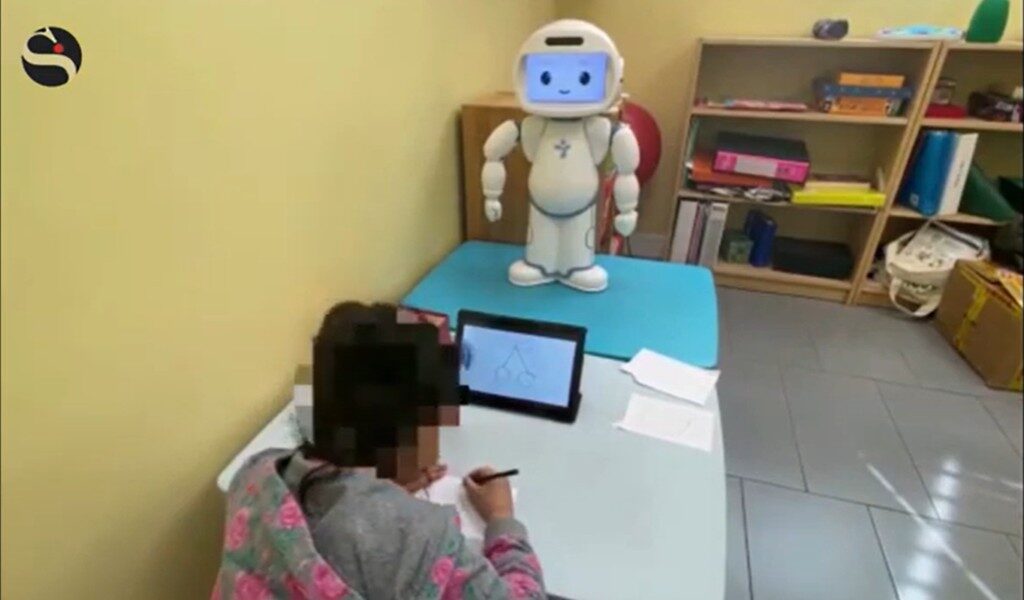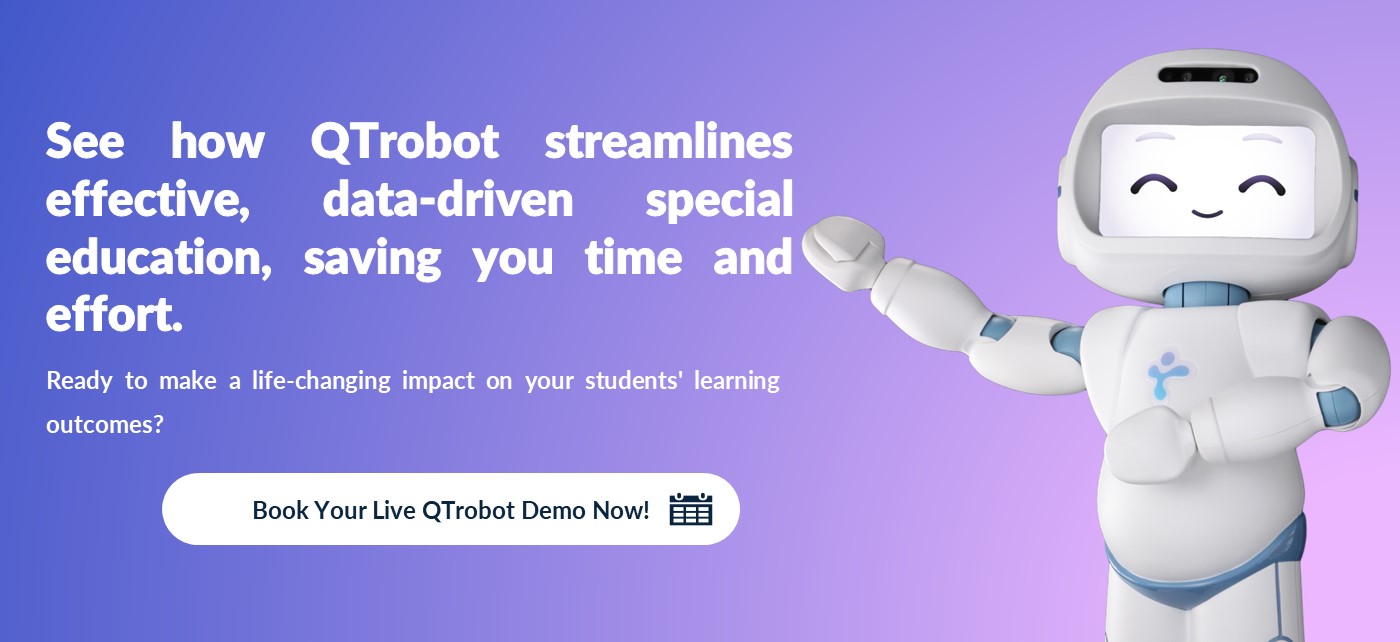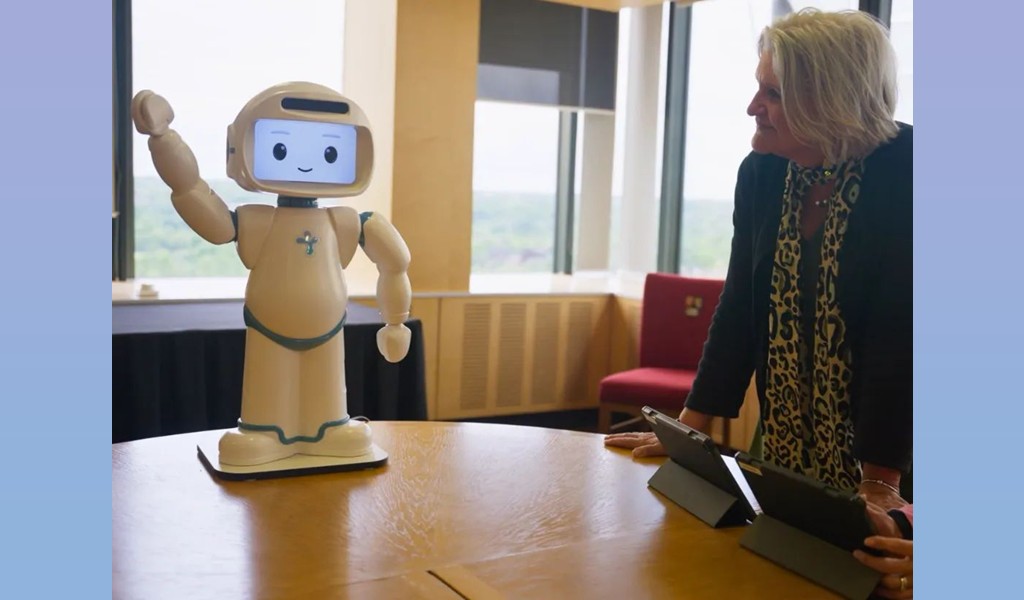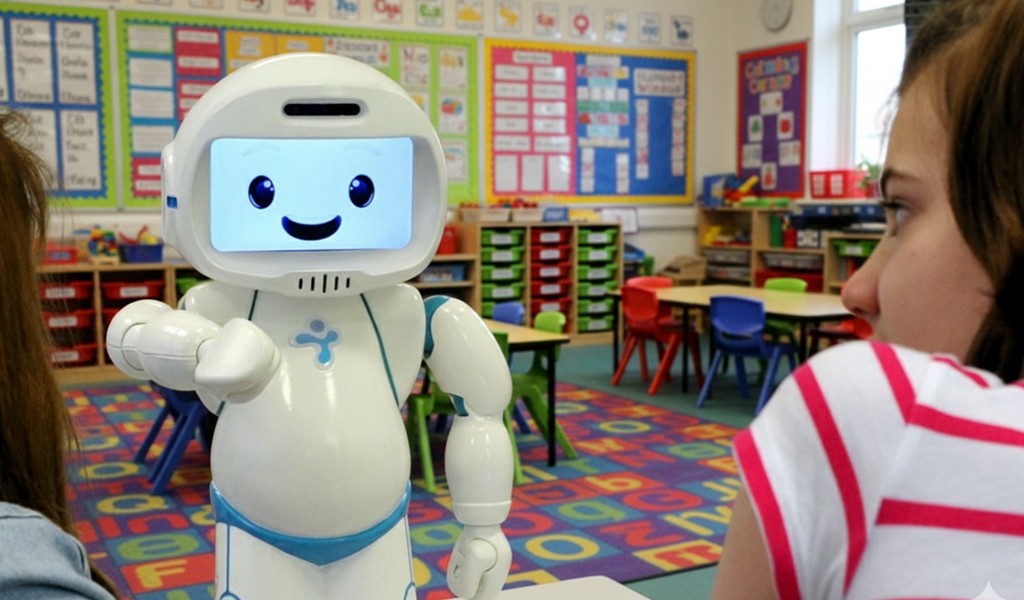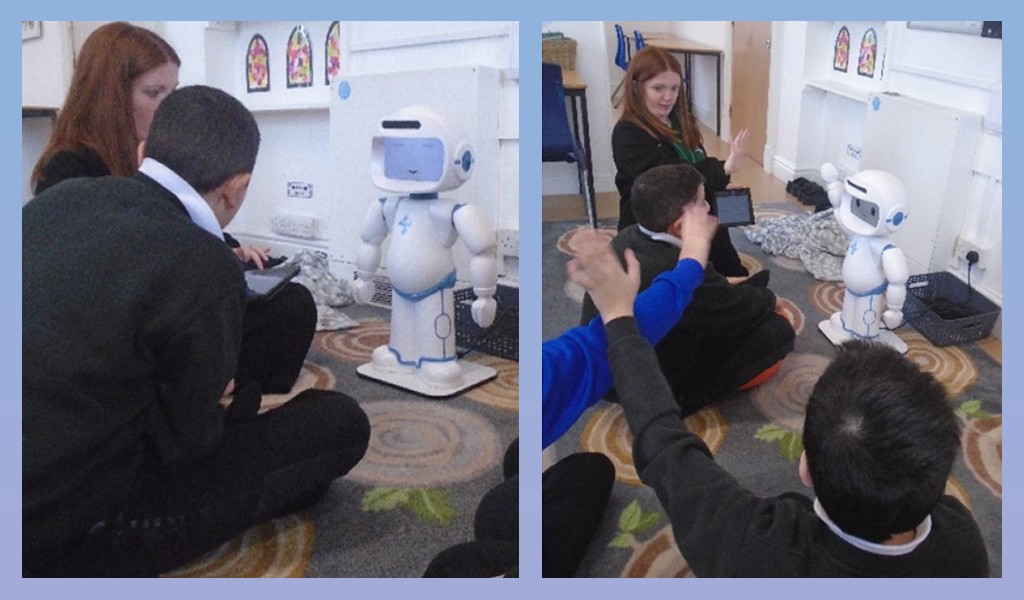At the Centro di Ricerca e Cura (CRC) in Rome, Italy, therapists are using QTrobot, the humanoid robot developed by LuxAI, to enhance learning for autistic children. Designed to make learning more engaging and accessible, QTrobot helps children develop essential communication, social, and emotional skills through interactive and structured sessions.
Since its introduction at CRC in 2019, QTrobot has become a central part of the center’s multidisciplinary therapy programs, which are fully accredited by Italy’s National Health System (SSN). This allows around 300 families to access therapy sessions at no cost, ensuring that innovation in autism care is available to everyone, not just private patients.
QTrobot: A Trusted Member of the CRC Team
QTrobot is roughly the size of a 5-year-old child, with a screen-based face capable of showing clear expressions and a camera on its forehead to detect interaction. Its arms and hands move with realistic precision, making it highly stable and child-friendly — even for very young children aged 2 to 2.5 years.
QTrobot uses two synchronized tablets — one for the therapist and one for the child — to guide each session. The robot supports individualized therapy in four key developmental areas:
- Social interaction and joint attention
Receptive and expressive language
Cognitive and problem-solving skills
Emotional literacy and self regulation
At CRC Rome, speech therapist and linguist Veronica Scordino uses QTrobot to engage children in activities that strengthen their communication, social, and emotional skills.
“QTrobot is designed to be predictable, clear, and consistent,” explains Veronica Scordino, speech therapist and linguist at CRC Rome. “For autistic children who struggle with social interaction, this makes communication less stressful and more motivating.”

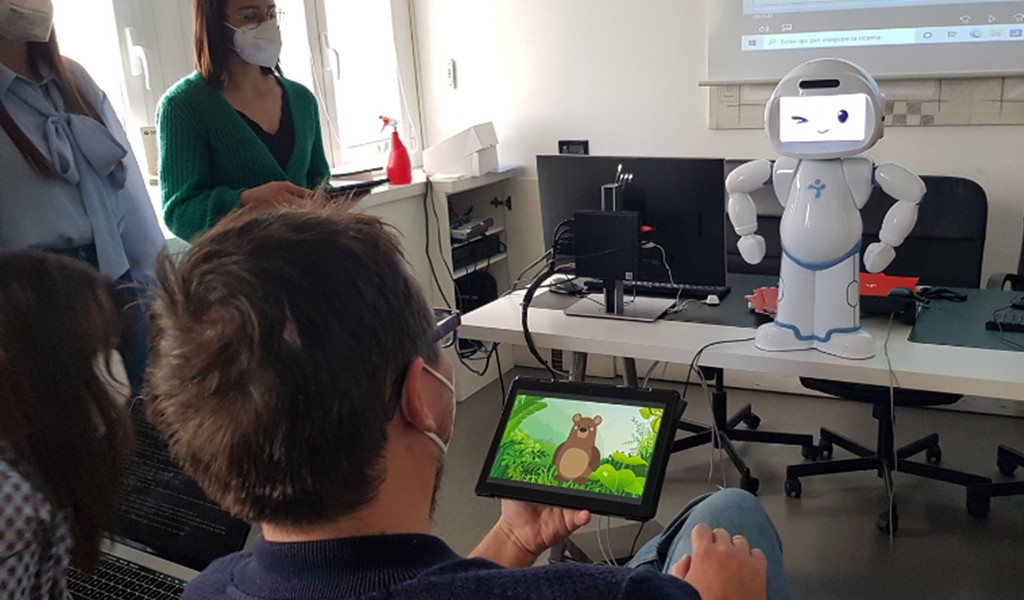
A Companion Across Disciplines
At CRC, QTrobot isn’t just a speech therapy assistant — it’s a multidisciplinary tool. It supports psychomotor therapists during fine-motor and coordination activities, and cognitive therapists in structured learning exercises.
Scordino shares that many children grow emotionally attached to QTrobot. This emotional connection builds trust, helping children stay engaged and motivated throughout their therapy sessions.
Evidence of Measurable Progress
Therapists at CRC have reported significant improvements in attention and engagement since integrating QTrobot into their sessions.
QTrobot’s animated “face” helps children recognize and imitate emotions, a critical skill for social development. Its consistent and clear visual feedback allows children to gradually learn how to smile, express happiness, or identify when others feel sad — turning emotional learning into a structured, achievable process.
Building Emotional Awareness Step by Step
For many children on the autism spectrum, understanding and expressing emotions can be a challenge. QTrobot provides a safe and structured way to explore feelings.
The robot starts by displaying simple expressions, such as a smiling face representing happiness, and guides the child to imitate it. Then, it leads discussions about what emotions mean, what causes them, and how to manage them.
By gradually practicing these skills, children learn to generalize emotional regulation to real-life situations — at school, home, or play.
A Vision of Compassionate Innovation
The CRC Rome program perfectly illustrates LuxAI’s vision: combining scientific rigor with empathy-driven design. By integrating QTrobot into therapy, clinicians at CRC are creating richer, more engaging sessions that lead to measurable improvements in children’s focus, communication, and emotional understanding.
Together, advances in genetic research and technologies like QTrobot are shaping a new future for autism care — one where every child is empowered to learn, connect, and thrive.
Technology with a Human Touch
QTrobot’s impact at CRC Rome demonstrates how compassionate technology can strengthen human-led care. Far from replacing therapists, QTrobot serves as a motivating, patient, and emotionally neutral co-therapist, helping autistic children feel comfortable and confident during learning.
By combining professional expertise with the structured, predictable interaction offered by QTrobot, CRC Rome is showing how innovation can make therapy more inclusive, measurable, and effective, one session at a time!
